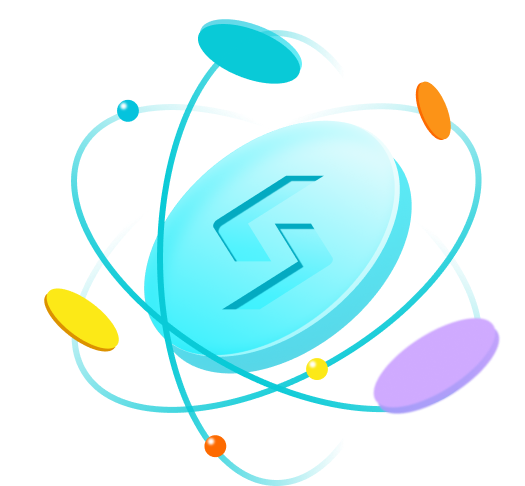Where and how to buy Ethereum
Step-by-step guide
Step 1: Create a Bitget account.
Step 2: Complete Bitget's identity verification.
Step 3: Place a Ethereum order through any of the various payment options provided.
 Credit/Debit in the Buy Crypto tab of the Bitget app
Credit/Debit in the Buy Crypto tab of the Bitget app Credit/Debit in the Buy Crypto tab of the Bitget website
Credit/Debit in the Buy Crypto tab of the Bitget website Add a new card to complete your payment on the Bitget app
Add a new card to complete your payment on the Bitget app Enter your bank card details to complete your payment on the Bitget website
Enter your bank card details to complete your payment on the Bitget website


Step 4:Monitor Ethereum in your Bitget spot account

Alternative methods to obtain Ethereum
Convert crypto to Ethereum with Bitget Convert

Swap on-chain assets to Ethereum with Bitget Swap
Methods to obtain Ethereum for free

Buy other cryptos
Buy Ethereum in your country


How to buy Ethereum in other countries?
What can you do with Ethereum?

Store/Hold Ethereum
Many users hold on to their Ethereum with the expectation of it increasing in value. You can store your ETH safely on your Bitget account or on our crypto wallet app BG Wallet, the most user-friendly and secure mobile wallet.

Trade Ethereum
You can trade Ethereum for 150+ cryptocurrencies on Bitget’s industry-leading, fast, and secure trading platform. Bitget offers many trading pairs for Ethereum trading to meet your needs.

Send Ethereum
Yes, Bitget allows you to easily transfer value around the world, fast. You can buy Ethereum online and send to anyone and anywhere with their Ethereum address.

Spend Ethereum
You can also buy goods and services with your Ethereum. More and more vendors and retailers accept Ethereum every day.

Donate Ethereum
Bitget Charity accepts Ethereum donations for global projects that aim to improve the lives of people in the bottom billion. You can donate Ethereum so no one misses out on the growth made possible by blockchain.

Learn More About Ethereum
You can read more in-depth articles on Ethereum from Bitget Research and study how cryptocurrencies like Ethereum work on Bitget Academy
Market stats to assist in determining optimal times for purchasing Ethereum
What Is Ethereum (ETH)?
Ethereum is a public decentralized blockchain launched in 2015 by Vitalik Buterin that permanently records the transactions that take place on its network. This database does not need a central authority to function or to be secure. Ethereum therefore operates without a trusted third party. It is the first blockchain that allows developers to build and deploy decentralized applications on top of it. The token of the Ethereum protocol is called Ether (ETH) .
Before Ethereum, the first cryptocurrencies were rather limited in terms of functionality. Most of them were digital currencies where each blockchain had some specificities to stand out. Vitalik Buterin had the idea of developing a protocol that would allow the development of any type of decentralized application without each developer having to create his own blockchain. This system is called "Ethereum Virtual Machine (EVM)" and acts as a decentralized global computer. It allows users to run computer programs using the resources of the blockchain.
How Ethereum (ETH) Works
Basically, the operation of Ethereum depends on the node operators to process transactions. For each transaction on the Ethereum network, the users will have to pay a fee in ETH. The fees are called "gas" because they facilitate the network and they will be sent to node operators. Generally, the users will be able to choose to pay more or less gas fees so that their transactions will be broadcasted and validated more or less quickly.
The transactions on Ethereum do not necessarily have to be a monetary one. As mentioned above, Ethereum has the ability to run a wide range of applications, from DeFi (decentralized finance) to DAO (decentralized autonomous organization), virtual marketplace, and so on. They are all powered by smart contracts, a special type of program stored on the Ethereum blockchain that can self-execute when certain requirements are met without the need for a third-party overseeing the procedure. The invention of smart contracts has greatly extended the use case of blockchain in real life. Almost every action that has a set of conditions and results can be programmed into smart contracts. Since smart contracts are on the blockchain, once it is deployed, it cannot be changed.
As the number of users on Ethereum increases, the network encounters scalability issues. The time and money required for a transaction to go through soars disproportionately. As for example in 2017, the CryptoKitties game exploded in popularity and its loaded users caused network congestion. Transactions took longer to confirm and there was an increase in transaction fees. Many blockchain companies have addressed this problem by centralizing their network. But in doing so, they obviously compromise decentralization, the nature of blockchain.
Sharding is the solution being considered by Ethereum developers. At the moment, one node in the Ethereum network has to store a copy of the whole chain's history, which is a humongous amount of data. While this ensures security for the chain, because hackers need to attack and rewrite the transaction history of all nodes to affect the chain, it is difficult for individuals to join the network as node operators due to the required computational power and greatly limit scalability. That's where sharding comes in. Sharding is a database partitioning technique that divides the network's database into multiple parts called "shards". A shard is a subset of a large database hosted on a separate server. While each shard contains a different portion of data, they all form one complete dataset. With "Ethereum sharding", a node does not need to store a complete copy of the network's history anymore, instead, it can use data techniques to confirm that the data has been made available by the network as a whole. This allows an individual to work as a node operator with their personal computer or phone, thereby increasing the number of nodes, improving transaction speed, and enhancing the security of the network.
There is also the rollup solution, which basically combines hundreds of transactions, facilitates them as if they are one transaction, and distributes gas fee across everyone in the rollup thus making it cheaper.
Since its creation, Ethereum uses the Proof-of-Work (PoW), miners provide their computing power to secure the blockchain and are rewarded in Ethereum for this. However, Ethereum is expected to adopt a different consensus method called "Proof-of-Stake (PoS) ". This is a validation method whose principle is to reproduce the mining process but in a virtual way. It is no longer based on computing power but on the possession of a cryptocurrency. The validators are then no longer miners but what we call "forgers". A forger builds a block of transactions and signs it to prove that he is indeed in possession of cryptocurrencies. The more crypto-currency he has, the more likely his block will be accepted as a solution and he receives a reward. In the case of Ethereum, it is ETH that you need to own.
The official integration of PoS into Ethereum is called the Merge and it is the most significant upgrade in the history of Ethereum, anticipated by blockchain followers worldwide.
With all these exciting upgrade plans in place for Ethereum, it is expected that the network will be more scalable, secure, and sustainable.
The reason why Ethereum stands out from thousands of crypto projects
In Ethereum's Whitepaper , it is stated that its intention is to create an alternative protocol for building decentralized applications with a strong emphasis on security and scaling, all thanks to the smart contracts we just mentioned.
With the Ethereum blockchain, developers can develop decentralized applications that can be used in real life, such as real estate management. As an example of known dApps we could take CryptoKitties, a game in which you can buy and sell cats. Each of these cats is unique and cannot be duplicated, stolen, or destroyed. But you can still exchange them like exchanging tokens with other people. It is also possible to create your own currency on the Ethereum network without having any particular knowledge of blockchain technology. The currency created is called a "token". For example, ChainLink, BAT, and VeChain are all "tokens" or at least have been before having their own blockchain for some.
What is the Ethereum “Merge" (the Merge) and Why?
Vitalik, since the beginning of Ethereum, announces that this protocol is currently an interim version and that there will be a version 2.0. This has been developed since the early days of Ethereum. However, we have really seen the beginnings of Ethereum 2.0 with the arrival of the Beacon Chain in late 2020. The Beacon Chain is the PoS-based chain that will run in parallel with the PoW-based Mainnet during the complete transition to PoS aka "the Merge". From the end of 2020, it has been possible to become a validator of the ETH network with 32 ETH.
The much-awaited Merge happens when the two systems finally come together, and PoW consensus on Ethereum is replaced permanently by PoS. Even once this is done, there will still be several steps before arriving at the "final version" of ETH 2.0 but "The Merge'' is going to be a great step forward since it will signal the end of the PoW-based protocol which ETH has been since its creation.
How Many Ether (ETH) Tokens Are In Circulation?
Back in 2015, the first block mined approximately 72 million ETH tokens - which were utilized in the crowd sale. Unlike the maximum cap of 21 million of Bitcoin (BTC), Ether has no limits on its total amount, meaning there is an infinite Ether (ETH) token left to mine. Currently, the total ETH in circulation has exceeded 120 million.
How to Buy ETH
If you're interested in becoming a part of the Ethereum ecosystem, one of the first steps you can take is to purchase crypto. There are various ways to do so, such as instantly buying crypto with credit/debit cards , via bank transfer, via peer-to-peer transactions, or even in-person purchases. Alternatively, you can deposit funds into your Bitget account and use them to purchase cryptocurrencies, including ETH.
Consider investing in Ether (ETH)? It only takes 2 minutes to create an account on Bitget and start trading ETH.
Check out the available ETH trading pairs on Bitget!
Futures market
Spot market
Ethereum Resources
Related Ethereum Pages
Our most recent articles about Ethereum












